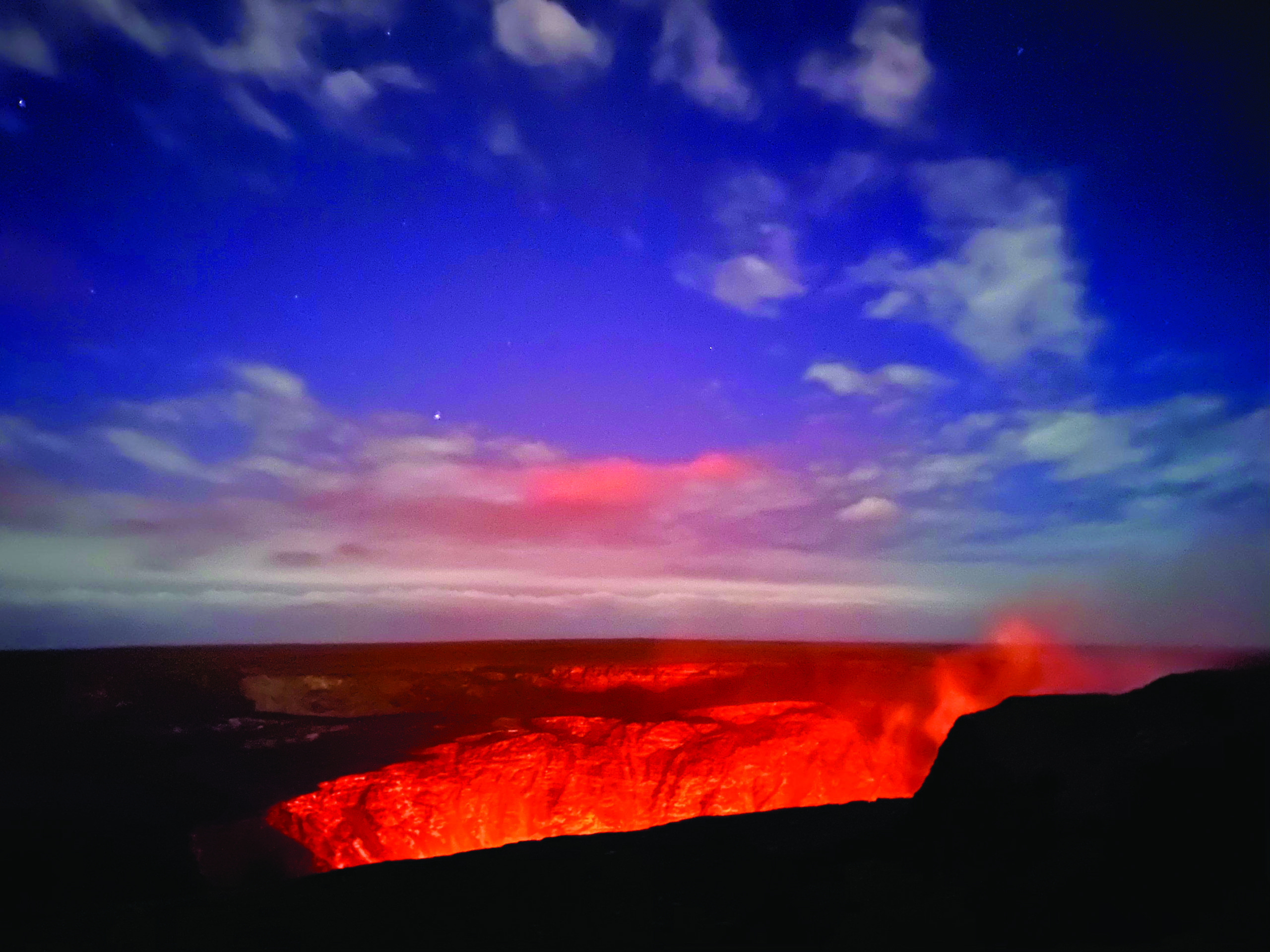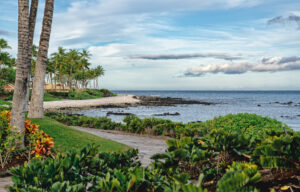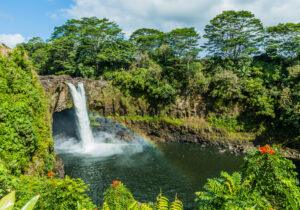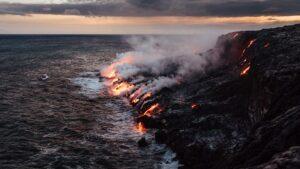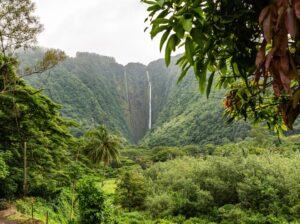The USGS on the May 24th eruption of Kilauea. Join us on one of our volcano tours to witness firsthand the majesty of this eruption and the beauty of the Hawaiʻian culture.
Halema‘uma‘u, the largest crater in Kīlauea Caldera, was the site of more than 50 explosive events during a 2.5-week period in May 1924.
Halema‘uma‘u, the largest crater in Kīlauea Caldera, was the site of more than 50 explosive events during a 2.5-week period in May 1924. The explosions were then, and remain today, the most powerful at Kīlauea since the early 19th century, throwing blocks weighing as much as 14 tons from the crater. Halema‘uma‘u doubled in diameter, deepened to about 400 m (1300 ft), and drastically changed in behavior—for the next 85 years it no longer hosted a long-lived lava lake, until one returned in 2008.
Prelude to the eruption – a draining lava lake and a swarm of earthquakes
A lava lake drained out of Halema‘uma‘u in February 1924, followed by a severe earthquake swarm in lower Puna, 50 km down the east rift zone. The seismic activity began building in early April, reaching its peak on April 23 with ground cracking, faulting, coastal subsidence, and hundreds of felt earthquakes. These events indicated the transfer of magma from the summit to lower Puna, either the same magma that left Halemaumau or stored magma that was pushed ahead by that which drained away.
Halema‘uma‘u Crater was 115 m (377 ft) deep following the draining of the lake. As seismicity waned in lower Puna, the crater floor began to collapse on April 29, deepening to more than 150 m (490 ft) on May 1 and nearly 210 m (690 ft) on May 7. Frequent dust clouds indicated continuing collapse in the following days.
Explosive events lasted for two and a half weeks.
The first explosion, neither seen nor heard, took place during the night of May 9–10 with small rocks reported to have been thrown out of the crater. Larger explosions followed, starting on May 13 and spaced a few hours apart. During the same time, Halemaumau continued to collapse, its failing walls contributing to the debris thrown from the crater. Clouds of rock particles ejected into the air often obscured the crater from view. Toward the end, it became difficult to distinguish the cloud of a small explosion confined to the crater from the dust cloud generated by a rock avalanche; consequently, the end date of the eruption is somewhat uncertain but is taken to be May 27, when the last observed ejecta left the crater.
The larger explosion clouds reached several kilometers high, with an maximum of 9 km (about 5.5 mi) estimated by Ruy Finch of HVO. Trade winds were blowing from the northeast during the eruption, yet wet ash fell at least once on railroad tracks in lower Puna, northeast of Halema‘uma‘u. This is consistent with the ash cloud rising about 5 km (3 mi) or more into the jet stream wind, which blows from the west. Gutters on the roof of a store in Glenwood, 16 km (10 mi) northeast of Halema‘uma‘u, collapsed from the weight of muddy ash, also suggestive of jet-stream transport.
Strong rainstorms, a few with lightning, accompanied some of the explosions, but it is impossible to know for certain if these conditions were related directly to the explosive activity.
Arguably the largest explosion took place on the morning of Sunday, May 18. A number of people were near Halemaumau then, and one of them was killed by falling debris. Another large one occurred that evening. Thereafter, none of the explosions matched those of May 18.
Most of the material in the explosion clouds was derived from rocks that fell and avalanched from the crater wall onto its floor, only to be incorporated in the powerful explosions. A small amount of lava was also ejected, probably coming from pockets of lava that were left behind in the crater wall after the lava lake drained away.
Explosions were powered by steam.
The explosions were powered mainly by steam, generated as groundwater came in contact with hot rocks. At Kīlauea, volcanologists think this happens when lavadrains from the conduit—probably a few meters wide— connecting the lava lake and a deeper magma body. Below the water table, a conduit filled with magma keeps water out, but, once the conduit empties, groundwater can flow into the still-hot conduit, where it quickly flashes to steam. Most of the time, the steam rises up the conduit and escapes without explosion. However, the wall of the conduit, which is no longer supported by a filling of lava, collapses from time to time, temporarily impounding the steam. The steam quickly builds up pressure, and, within several minutes, overcomes the weight of the blockage and explodes the collapse debris out of the crater. As pressure is released, the explosion ends and passive release of steam resumes, only to be punctuated again by another wall collapse.
Probably some volcanic gas was also emitted in 1924. Such gas would have streamed up the conduit even when it was empty and likely contributed to the pressure build-up after wall collapses.
Halema‘uma‘u more than doubled in size.
Halema‘uma‘u grew during the eruption, as its walls collapsed and its bottom dropped. It doubled in diameter to approximately 1,000 m (3,280 ft) and subsided about 285 m (935 ft) after the lava lake drained. Shortly after the eruption, HVO scientists Ruy Finch and Thomas Jaggar calculated that the volume of Halemaumau enlargement was about 200 million cubic meters (260 million cubic yards) and the volume of the ejecta, about 0.8 million cubic meters (1 million cubic yard). In other words, the ejecta constituted only about 0.4 percent of the volume of enlargement. As Jaggar wrote at the time, “The explosive eruption was merely an incident in the mechanism of engulfment.”
Similar explosive eruptions will happen again.
Almost certainly. All that it takes to trigger them is the removal of magma from the conduit that connects Halema‘uma‘u to its parent magma body 1–3 km (0.6–1.8 mi) below the caldera floor. Though most past explosions that we know about took place during one of Kīlauea’s dominantly explosive periods, the 1924 events occurred during a dominantly effusive period. This shows that explosions can be triggered by large-scale migration of magma into one of the rift zones.
No matter whether Kīlauea is in an effusive period, as it is now, or in an explosive period, as it was between about 1500 and the early 19th-century, it should be considered an explosive volcano. Although violent, the 1924 explosions were small by comparison with past explosions at Kīlauea—so small, in fact, that it is hard to find even a trace of the 1924 deposits anywhere outside the caldera. In contrast, the caldera walls expose as much as 11 m (36 ft) of past explosive deposits. In a way, then, the 1924 events are the equivalent of looking backwards through a telescope at past explosions—enlightening, but not to scale.

